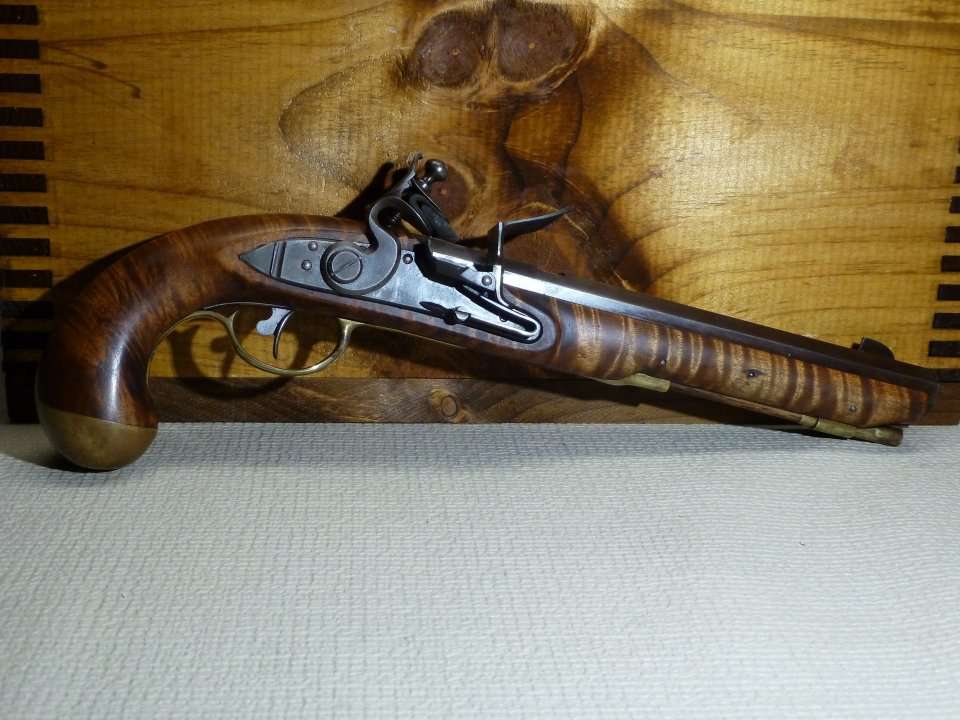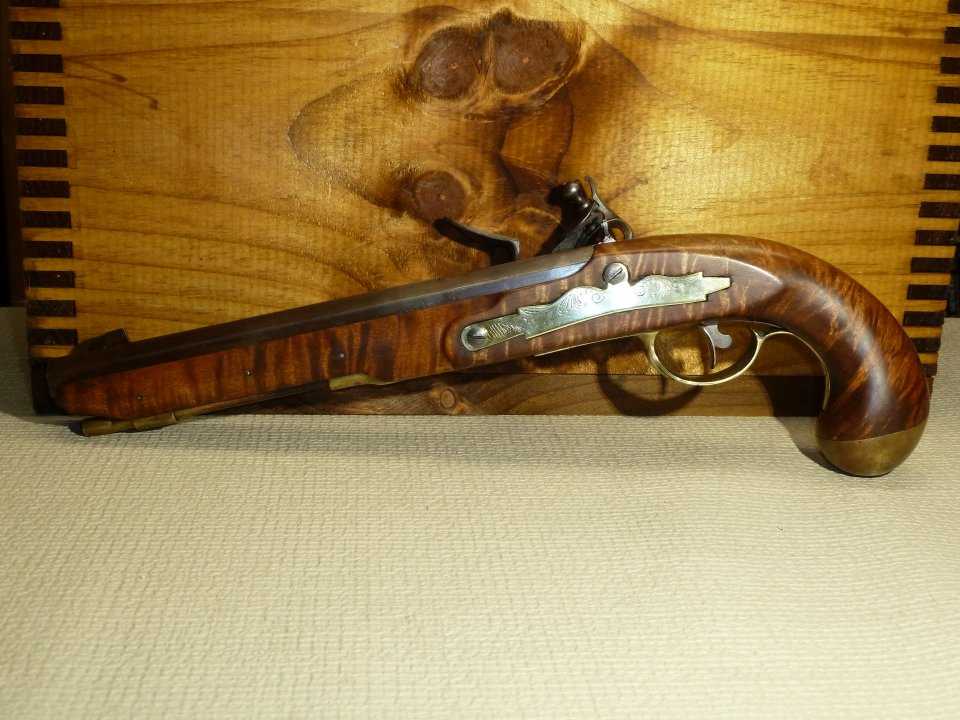I just picked up a very nice, used Kentucky pistol in 45 cal. There are no problems, but I do have a question.
The first time I shot it, I found that the ball and patch recommended by the seller (0.440 and 0.015) were very difficult to start and I even checked to see if it really was a .45 before I pushed too hard (it was). Once started, the patch and ball went down the barrel smoothly with a force I expected.
My guess is that the bore and rifling were made that way: hard to start, but normal the rest of the way down.
It shoots well, no complaints there. Is there a reason that a bore would be made to be tighter at the entry?
Ron


The first time I shot it, I found that the ball and patch recommended by the seller (0.440 and 0.015) were very difficult to start and I even checked to see if it really was a .45 before I pushed too hard (it was). Once started, the patch and ball went down the barrel smoothly with a force I expected.
My guess is that the bore and rifling were made that way: hard to start, but normal the rest of the way down.
It shoots well, no complaints there. Is there a reason that a bore would be made to be tighter at the entry?
Ron







